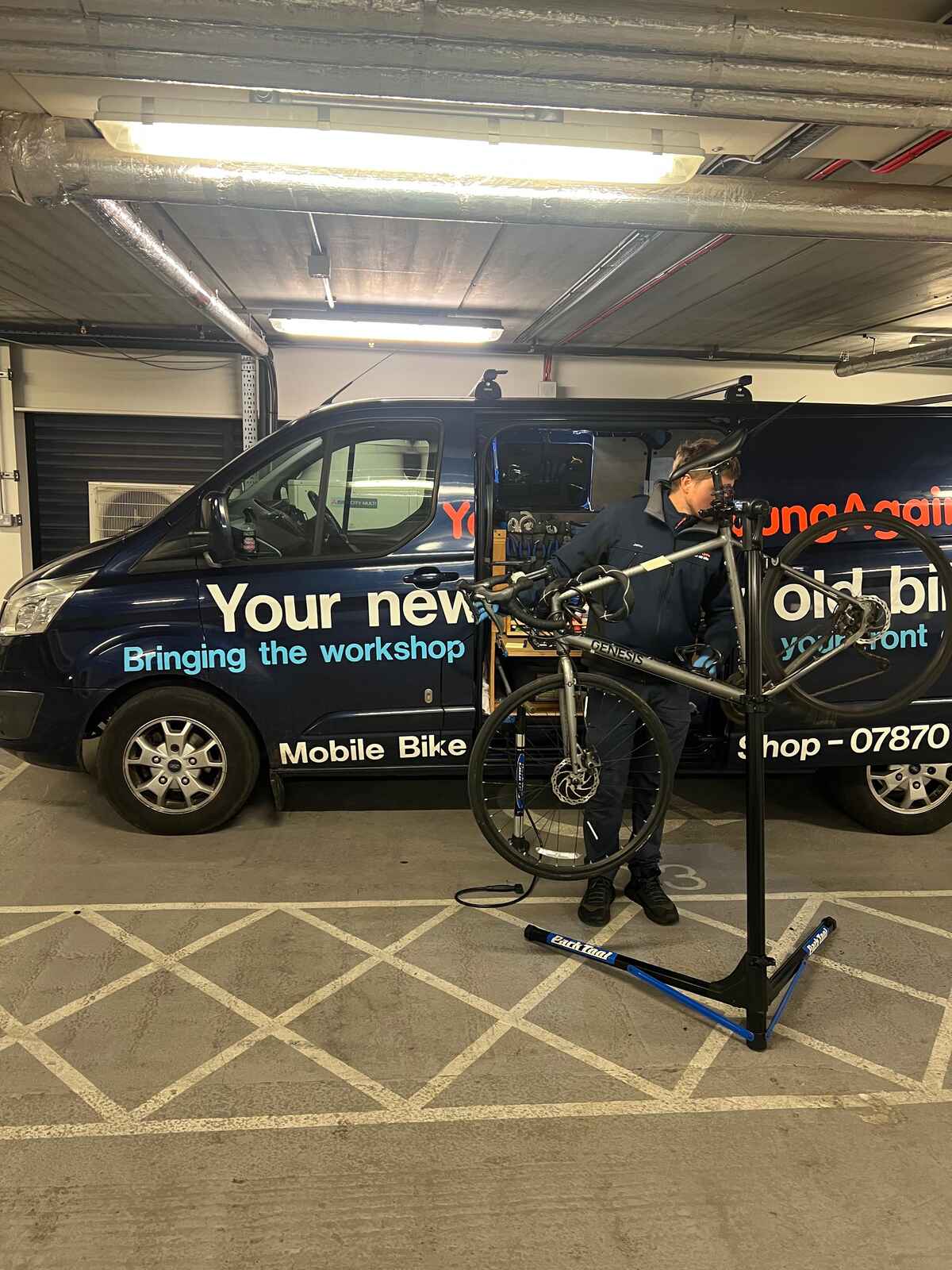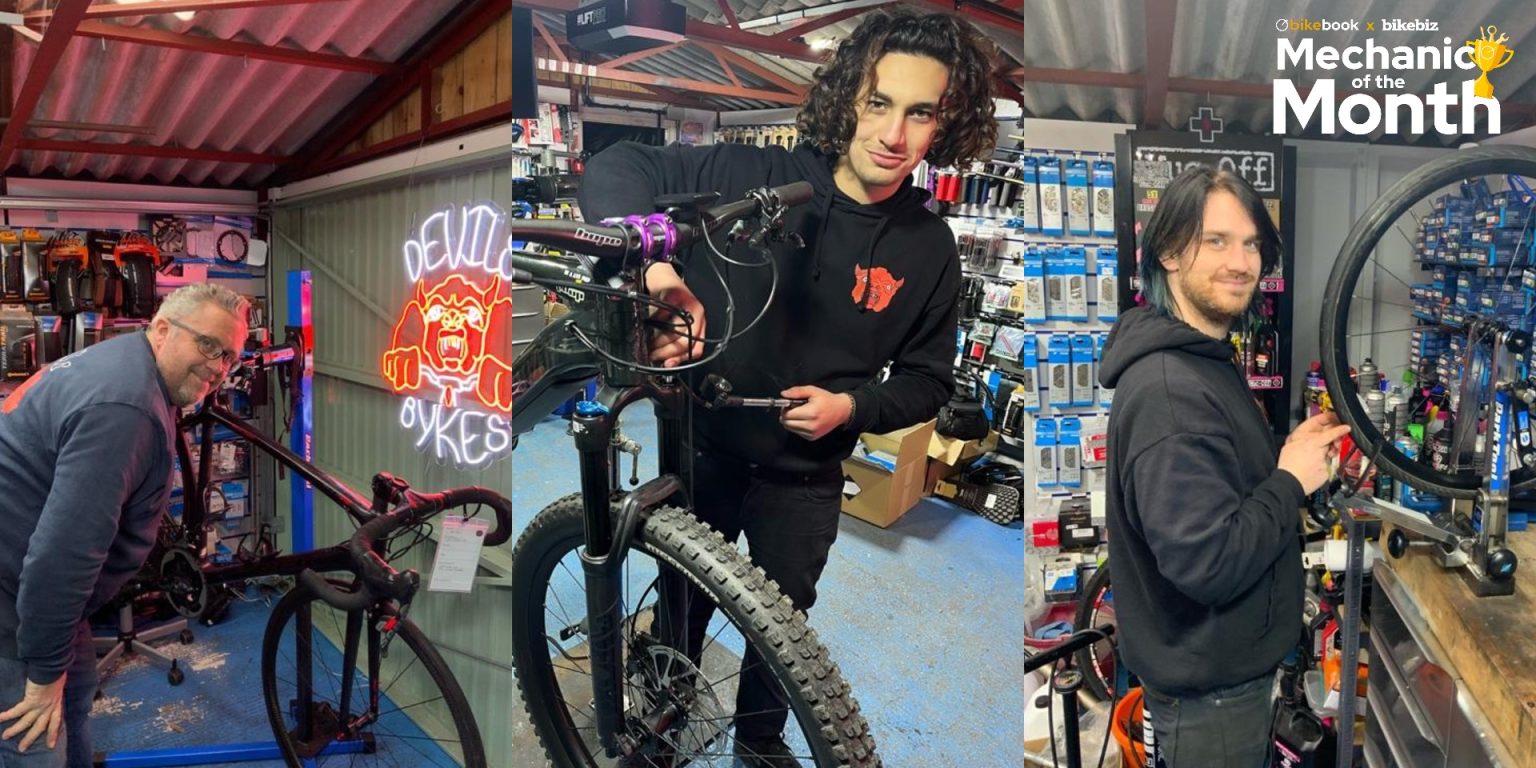January 4, 2026
•
7 minute read
How to Track Bookings for Your Bike Shop
You've got customers eager to book their bike repairs, rentals, and services, yet mistakes are slipping through the cracks.
Jake Fieldsend
Founder & CFO
You've got customers eager to book their bike repairs, rentals, and services, yet mistakes are slipping through the cracks. You've made promises about efficiency you can't seem to keep. The difference between a bustling shop and frustrated customers often lies in how well you manage bookings. Let's dissect the essentials of booking management and how you can streamline your scheduling while keeping customer satisfaction front and centre.
1. Understanding the Basics of Booking Management
1.1 What is Booking Management?
Booking management is the backbone of any successful bike shop aiming to optimise its customer service and streamline operations. At its core, booking management involves coordinating customer appointments effectively. It ensures that your resources, whether bike mechanics or rental stock, are used efficiently. Imagine the chaos if three customers showed up for a single repair slot — disorganisation like that can swiftly ruin reputations.
The Importance: A robust booking system can prevent overlapping appointments and ensure every customer is attended to promptly. This isn't just about efficiency; it’s about creating a smooth experience for your customers that builds trust and loyalty.
- Avoid Overlaps: Ensure precise appointment timing.
- Maximised Resources: Schedule mechanics or bikes without downtime.
- Enhanced Experience: Make it seamless for customers to book.
1.2 Why is Efficient Booking Management Crucial for Bike Shops?
Think of booking management as the unsung hero of customer satisfaction. Too often, shops overlook how vital efficient scheduling is, focusing instead on flashy marketing campaigns. Yet, poor booking processes can lead to double-booking, long wait times, and annoyed patrons. By efficiently managing bookings, you're not just improving the workflow; you're sculpting the customer experience from start to finish.
Key Benefits:
- Reduced Wait Times: Quick and clear scheduling means more on-time appointments.
- Customer Retention: Keep customers coming back by ensuring a smooth service cycle.
- Reputation Boost: Word travels fast; satisfied customers spread the word.
Pro-tip: Consider digital tools like Bikebook that simplify the booking process with features
designed to eliminate manual errors and make your shop stand out in the community.
1.3 The Role of Digital Tools in Streamlining Bookings
Relying on paper diaries and old-school calendars is a recipe for errors. Digital tools step up where traditional methods falter, offering a world where managing bookings is as simple as clicking a button. Modern platforms like Bikebook provide bike shop owners with an integrated system that simplifies tracking and adjusting bookings, aligning with your operational needs effortlessly.
What Digital Tools Offer:
- Real-time Updates: Any changes instantly visible across your team.
- Automated Reminders: Reduce no-shows with email or text alerts.
- Flexible Management: Easily rearrange bookings to fit the schedule.
Incorporating these tools doesn't just modernise your shop; it ensures customers are met with efficiency and professionalism from their first interaction. They walk away impressed, more likely to return and recommend your services.
Pro-tip: Choose a tool that aligns with your shop's size and complexity, ensuring scalability as your customer base grows.
2. How to Use Bikebook for Managing Your Bike Shop Bookings
2.1 Setting Up Your Bike Shop Profile on Bikebook
Setting up your Bikebook profile is your first step to managing bookings effectively. It's straightforward and greatly improves your visibility to potential customers searching online for services. Start by registering your bike shop on the Bikebook platform and filling out your profile with accurate details such as your shop's location, contact information, and the services you offer. This not only optimises your presence on the platform but also helps in building trust with potential clients as you appear more professional and accessible. You’ll find that investing time in crafting a comprehensive profile can lead to an increase in bookings.
Remember that your profile should highlight your unique selling points. If your shop specialises in specific types of bikes or services, make sure this is prominently displayed. Encourage satisfied customers to leave reviews; social proof can go a long way in convincing new customers to choose your services. Regularly update your profile to reflect any changes in your offerings or business hours. A well-maintained profile that accurately depicts your expertise will make your bike shop stand out in local search results.
Pro-tip: Ensure your shop's availability settings are kept up-to-date on Bikebook. This prevents booking disappointments and enhances your credibility with customers.
2.2 Utilising Bikebook's Workshop Management Platform
The Workshop Management Platform by Bikebook is designed to simplify your daily operations. Begin by familiarising yourself with its features: scheduling, inventory tracking, and customer communication. Streamline your workflow by synchronising your bookings with your shop’s calendar. This tool enables you to monitor customer appointments efficiently, reducing the chances of double bookings or scheduling mishaps.
Furthermore, the platform provides insights into your inventory management. By tracking your stock levels and organising repair parts, you can prevent over-ordering or running out of essential items. This system not only saves time but also reduces operational costs by ensuring that you purchase only what you need. With a centralised management hub, you can focus more on customer service and less on administrative tasks.
Pro-tip: Use the platform's automated reminders to send customers timely updates about their service status, which keeps them informed and reduces unnecessary inquiries.
2.3 Enhancing Customer Experience with Bikebook’s Booking Features
Bikebook doesn’t just organise your bookings; it enhances the overall customer experience. Start by integrating Bikebook's easy online booking system into your shop’s website. This allows your customers to see real-time service availability and book appointments without needing to call, providing a seamless and convenient way for them to engage with your shop.
The platform also supports customer feedback collection post-service, which is invaluable. Encourage your clients to leave reviews and testimonies, as these insights showcase the quality of your work to prospective customers. Responding promptly to both positive and negative feedback builds your relationship with clients and demonstrates that you value their opinions. A customer-centric approach not only boosts your reputation but can lead to repeat business.
Pro-tip: Regularly check and update your service options on Bikebook to reflect seasonal offerings or special promotions, ensuring your shop’s services remain competitive and appealing.
3. Best Practices for Bike Shop Booking Management
3.1 Regularly Updating Your Service Availability
In the busy world of bike shops, keeping your service availability up to date is more than just good practice—it's essential for avoiding scheduling chaos. If you're not consistently updating your availability, you risk double-bookings and frustrated customers. Tailor your calendar to reflect real-time changes. Are any techs sick? Did someone extend their holiday? Adjust your slots immediately.
See this process as a cornerstone of your booking strategy:
- Use a digital scheduling tool like Google Calendar or Bikebook’s Workshop Management Platform, which can alert customers of changes.
- Regularly cross-check your bookings. Weekly checks prevent built-up errors.
Consider this proactive step: use notifications. Set reminders to check your schedule. This will maintain accuracy without constant monitoring.
Pro tip: Create a routine. Block five minutes each morning to confirm your upcoming bookings and adjust availability as necessary. This simple habit can save hours of hassle.
3.2 Managing Customer Expectations and Feedback
You know how crucial customer satisfaction is, don't you? Managing their expectations from the start can prevent headaches later. Communicate service details clearly—what’s included in a tune-up or a detailed bike cleaning. Never assume! Customers appreciate transparency.
Address feedback decisively. Whether it's a rave review or a complaint, each offers a learning opportunity:
- Acknowledge issues promptly and offer solutions. Just responding reassures customers.
- Highlight positive feedback as testimonials; they're honest endorsements enhancing your brand.
To foster trust, implement feedback loops. Ask customers post-service how you did and how you can improve. It shows you value their input, turning criticism into constructive growth.
Pro tip: Use digital surveys. Tools like SurveyMonkey automate feedback collection, helping you analyse trends and maintain quality.
3.3 Leveraging Bikebook Reviews to Boost Your Shop’s Reputation
Let's face it. Reviews are today's word of mouth, a currency that boosts your shop’s reputation if leveraged right. Encourage satisfied customers to leave positive feedback on platforms like Bikebook, highlighting your shop’s unique selling points. Do this systematically by following up after appointments.
Here's a strategy for managing reviews:
- Promptly respond to any review, showcasing you care about customer experiences.
- Use negative reviews as a guide for improvements. Teach your team to address similar future issues.
Aim to make each service memorable, increasing the likelihood of an enthusiastic review. Showcasing these on your site builds credibility and attracts new customers.
Pro-tip: Create incentives for reviews. Offer small discounts or perks for feedback, but ensure it feels genuine and not transactional.
Mastering the art of efficient booking management in your bike shop involves more than just setting appointments. It requires a focus on continual communication, effective use of platforms like Bikebook, and a commitment to delivering exceptional customer experiences. By refining these practices, you're positioning your shop not only for operational success but customer loyalty too. Interested in a streamlined system? Explore how to enhance your shop efficiency with Bikebook’s Workshop Management tools.



